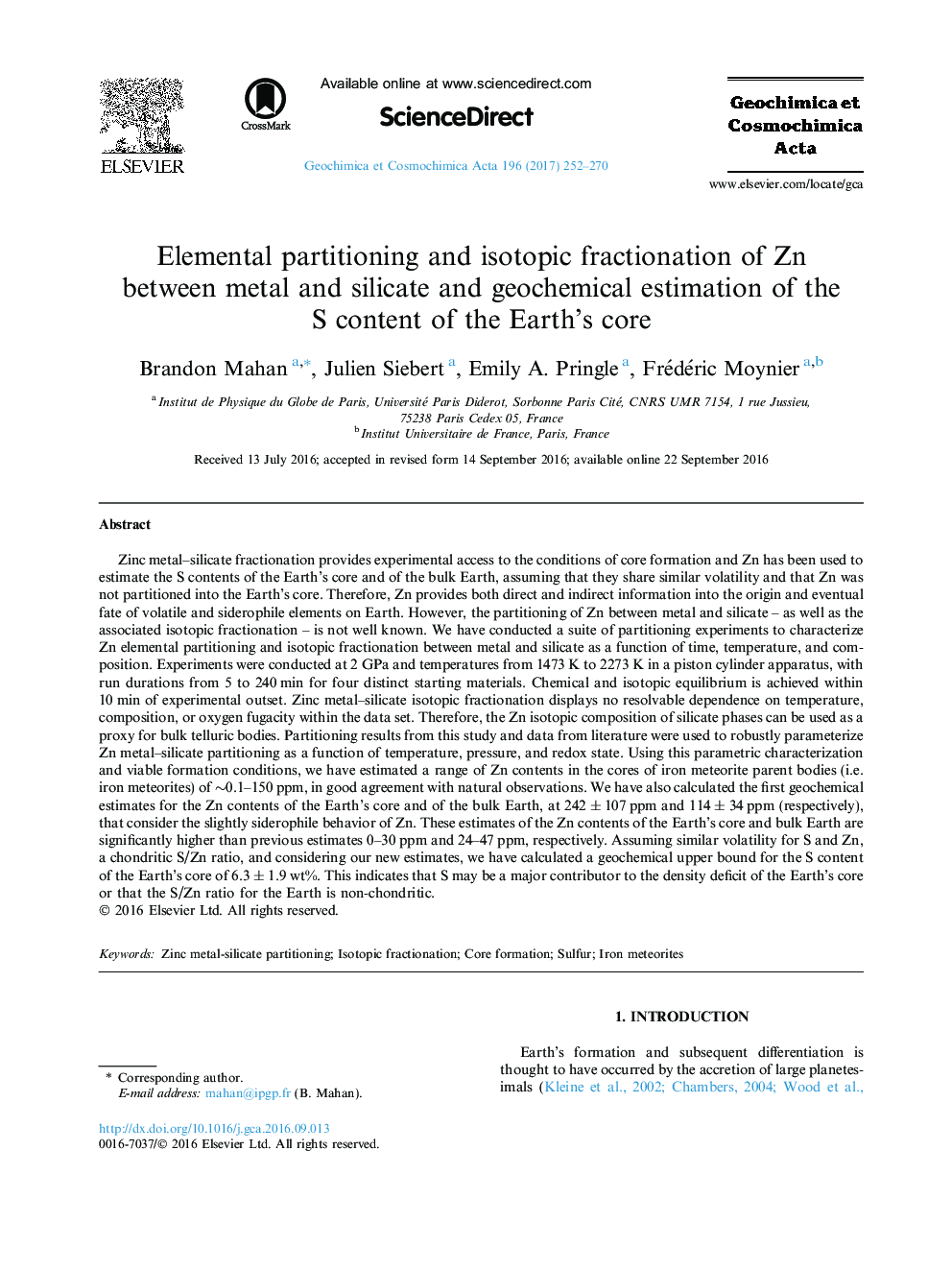| Article ID | Journal | Published Year | Pages | File Type |
|---|---|---|---|---|
| 6437112 | Geochimica et Cosmochimica Acta | 2017 | 19 Pages |
Zinc metal-silicate fractionation provides experimental access to the conditions of core formation and Zn has been used to estimate the S contents of the Earth's core and of the bulk Earth, assuming that they share similar volatility and that Zn was not partitioned into the Earth's core. Therefore, Zn provides both direct and indirect information into the origin and eventual fate of volatile and siderophile elements on Earth. However, the partitioning of Zn between metal and silicate - as well as the associated isotopic fractionation - is not well known. We have conducted a suite of partitioning experiments to characterize Zn elemental partitioning and isotopic fractionation between metal and silicate as a function of time, temperature, and composition. Experiments were conducted at 2 GPa and temperatures from 1473 K to 2273 K in a piston cylinder apparatus, with run durations from 5 to 240 min for four distinct starting materials. Chemical and isotopic equilibrium is achieved within 10 min of experimental outset. Zinc metal-silicate isotopic fractionation displays no resolvable dependence on temperature, composition, or oxygen fugacity within the data set. Therefore, the Zn isotopic composition of silicate phases can be used as a proxy for bulk telluric bodies. Partitioning results from this study and data from literature were used to robustly parameterize Zn metal-silicate partitioning as a function of temperature, pressure, and redox state. Using this parametric characterization and viable formation conditions, we have estimated a range of Zn contents in the cores of iron meteorite parent bodies (i.e. iron meteorites) of â¼0.1-150 ppm, in good agreement with natural observations. We have also calculated the first geochemical estimates for the Zn contents of the Earth's core and of the bulk Earth, at 242 ± 107 ppm and 114 ± 34 ppm (respectively), that consider the slightly siderophile behavior of Zn. These estimates of the Zn contents of the Earth's core and bulk Earth are significantly higher than previous estimates 0-30 ppm and 24-47 ppm, respectively. Assuming similar volatility for S and Zn, a chondritic S/Zn ratio, and considering our new estimates, we have calculated a geochemical upper bound for the S content of the Earth's core of 6.3 ± 1.9 wt%. This indicates that S may be a major contributor to the density deficit of the Earth's core or that the S/Zn ratio for the Earth is non-chondritic.
